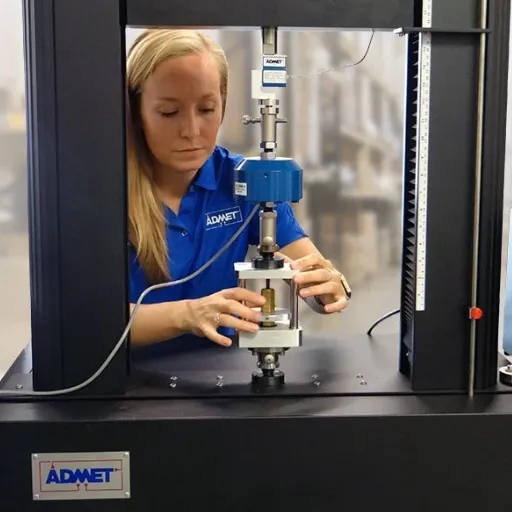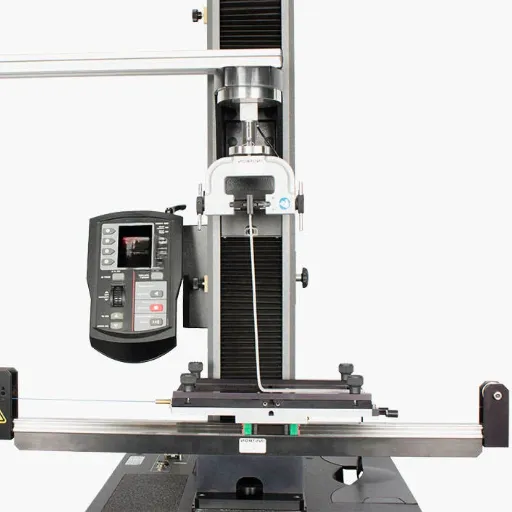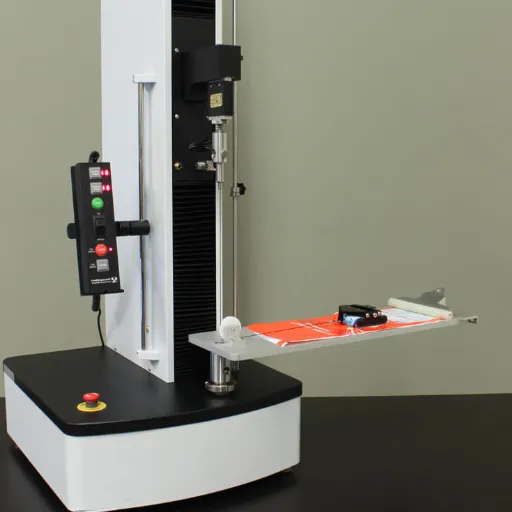On a note of utmost precision and reliability, full calibration of your universal test machines must be ensured first. Calibration can be considered the ground upon which accurate data and consistent performance are built, whose textbooks recommend that it cannot be compromised during any testing process. This article will walk you through all the important steps and best practices in calibrating your universal test machine for utmost accuracy and efficiency. For the engineer well-versed in materials testing or just entering the arena of materials testing, this article will give you an easy insight into and practical tips on complying, attaining better test results, and extending the life of your equipment. Let’s thus take a step into improving your testing abilities through the good art of calibration.
Importance of Calibration for Universal Test Machines
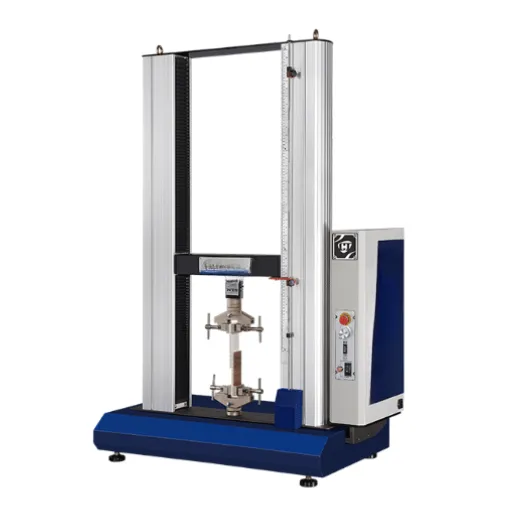
Ensuring Precise and Reliable Testing Results
The entire process of recording test results through a universal testing machine must grant genuine and trustworthy results to achieve replicable outcomes for materials analysis. Calibration makes the machine function properly and deliver exact force, strain, and displacement readings. Lack of routine calibration can lead to inaccuracies, unreliable data, and hence possibly erroneous interpretations. Precision is a must if results are to be used in critical engineering applications or in conformity to standards.
Maintenance and calibration of UTM have to be carried out by authorized professionals and should normally be done on schedule for the assurance of consistent reliability. In general, such maintenance involves comparison of the readings given by the machine to certified reference readings under controlled conditions. When deviations are observed, adjustments are made, and the performance of the machine is amended to conform with valid standards. Also, adherence to a regular interval for calibration assures greater accuracy in measurements while improving the overall life of your testing equipment as issues are addressed before they can grow with time.
Calibration is also critical to maintaining confidence in the testing procedure. It is on firm test results that engineers and researchers base their decision on material properties and behavior. From well-maintained and calibrated machines, the chances of data inconsistencies diminish; laboratory efficiencies are improved, regulatory or quality assurance requirements remain in conformance. In other words, calibration serves as the core for accurate and reliable testing results.
Extending Lifespans for Universal Testing Machines
Good Maintenance Practices:
Regular cleaning and servicing can extend the lifetime of universal testing machines. Inspection picks wear and tear signs to ensure that all components are functioning properly and safely. Periodic washing keeps dust particles and other debris away from sensitive parts, such as load cells and grips, inhibiting measurements or wear.
Periodic Calibration and Servicing:
Being able to verify measurement accuracy over time ensures accuracy in a universal testing machine through calibration. Calibration should be scheduled periodically with a certified service provider to ensure that any drift in measurement capability can be identified and rectified and to keep record-keeping of maintenance and calibration activities. This will assist in maintaining compliance with industry standards and factors in enhancing machine reliability.
Proper Usage and Storage:
Make sure you always use it within its rated load capacity as indicated in the instructions provided by the manufacturer. And one should always treat the machine with care and never rough-handle it. When you are not using the machine, keep the equipment in a clean, dry place with a stable environment to shield it from adverse effects of moisture or temperature changes that might dent its performance and structural integrity. Applying these preventive methods guarantees the universal testing machine’s lifespan and dependable performance.
Compliance with Industry Standards and Regulations
Compliance with industrial standards and regulations has always evolved as a crucial factor to ensure the reliability and safety of a universal testing machine. Given a test performed for material assessment, the equipment that has to undergo certain tests must be absolutely accurate and consistent with test capabilities. Standards such as ASTM, ISO, and EN provide specifications related to universal testing machines, including calibration, performance, and operational guidelines. Adherence to these standards ensures worldwide compatibility and adds credibility to test results.
On the regulatory front, the procedure also offers protection to operators against accidents that might occur during operational procedures. Owing to their exposure to very heavy workloads and forces, it is quite imperative that universal testing machines comply with safety norms defined under these regulations. Repeated audits of the facility, maintenance avenues, and application of accessories of certified institutions add to these safety compliances. Non-compliance, on the contrary, becomes grounds for warranties and claims from legal, financial, and reputational perspectives.
Last, compliance supports the conscientious usage of resources in manufacturing and testing processes. In respect to industry regulations, companies intend to organize their act into minimizing waste and putting down operational risks, thus satisfying their customers and stakeholders. Following this route means paying attention not only to the integrity of the testing procedure but also to providing opportunities for better sustainability and innovations in the materials testing industry.
Calibration Procedures for Universal Test Machines
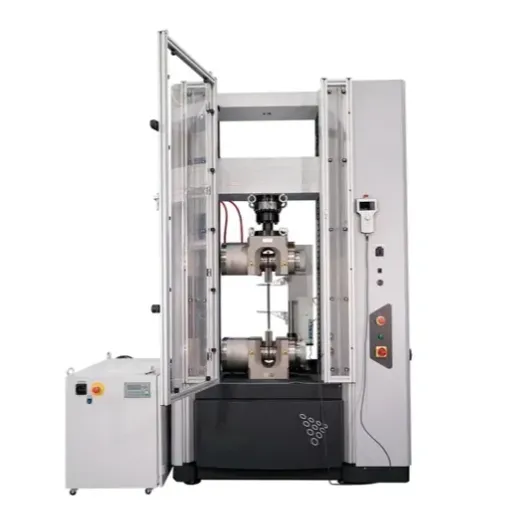
Step-by-Step Guide to Calibrate a Universal Testing Machine
- Preparation: Start with the cleaning of the testing machine to make it free from any dust or anything that could obstruct its calibration. Check to see that all components such as grips, load cells, and fixtures are firmly installed. Also, make sure that the temperature and environmental conditions in which the machine is operating comply with the requirements set by industry standards.
- Select the Calibration Equipment: The calibration must be done with certified equipment. Examples are a calibrated load cell or a proving ring. The certification of the equipment should be valid and compatible with national or international measurement standards to ensure its accuracy.
- Load Cell Calibration: Apply increasing loads to the machine utilizing the calibration equipment. Note the readings shown by the machine at each load point and compare them against the known values of the calibration devices. The machine shall be adjusted, if required, to meet the standard value within an acceptable tolerance.
- Displacement Verification Accuracy: Verify the calibration displacement or crosshead movement using external measuring devices such as digital calipers or linear encoders. Check the readings of the machine against the real displacement measure, and if there is any inconsistency, apply corrections.
- Document Results: After the procedure is complete, document the procedure results in a full calibration report. This shall include, but not be limited to, the date of calibration, list of equipment used, their tolerances, and adjustments made. This report shall be kept for quality assurance and regulatory compliance purposes.
If followed carefully, these steps will see your universal testing machine perform with reliability and consistency while meeting the industry’s highest standards of accuracy and precision. Regularly scheduled calibration, whether yearly or as the regulation implies, will ensure testing errors are kept to a minimum and the strength of your test results is improved.
Necessary Tools and Equipment for Calibration
To calibrate a universal testing machine, certain tools and accessories must be at hand. These equipment safeguard the accuracy and reliability of the system throughout calibration, thereby abiding by the prescribed standards.
One of the prime requirements for the calibration process is a set of certified weights or perfectly working load cells to determine the working of the load-measuring system of the universial testing machine under calibration at various periods of test. The weights should complement with traceable certification, which guarantees their accuracy. Secondly, any displacement measuring device, such as dial indicators or linear variable differential transformers (LVDT), should be used for establishing the exact crosshead displacement during worked operations.
The second condition from the process is to have a good acquisition system in recording the readings of the load and of the displacements so that a comparison of measured values with corresponding reference values can be arranged. Also, special alignment tools, such as spirit level and alignment brackets, are needed for aligning the components such as grips and crossheads. Proper alignment helps in reducing errors due to misalignment in the operation of the machines. Records such as calibration certificates will guarantee that the whole process will be compliant with the regulations and will be helpful if a record is required in the future.
Calibration Intervals and Their Importance
Universal testing machines need calibration at fixed intervals to maintain accuracy and reliability. Calibration is technically the verification process that checks if the measurements given by the machine agree with standard reference values. Over time, the components may get worn out, and the behaviour of the machine will start to deviate. Hence, doing a calibration at regular intervals will help identify such non-conformities and correct them over time, thereby allowing the machine to give consistent and reliable results.
The interval of calibration depends on several factors like frequency of usage, nature of the environment in which testing is done, manufacturer recommendations etc. Most universal testing machines should be calibrated on an annual basis at minimum to remain within the standards and regulations of their industry. Regular checking not only builds confidence in outputs of different tests but is also instrumental in confirming that machines continue to meet usability criteria for each application.
Calibration intervals have to be strictly followed for reasons other than just calibration. Industries worldwide must issue some regulatory bodies enforcing adherence to these intervals. These standards include ISO, ASTM, and several others that emphasize accurate and traceable testing procedures. Producing test data that in no form can be justifiable on merit due to a lack of regular calibration period certainly predisposes a company towards an inferior product evaluation and faulty quality control for that matter. Hence, just knowing about calibration periods will ensure the safety, consistency, and trust of the products.
Challenges in Calibrating Universal Testing Machines

Environmental Factors Affecting Calibration
Temperature and humidity are among the chief environmental factors that can largely calibrate the universal testing machine. Changes in temperature may also induce expansion or contraction in the machine components and produce variations in the force measurements. High humidity levels may have contributed to corrosion of various parts of the machine, adversely impacting the operation and calibration stability with time. Hence, it remains imperative to maintain controlled environmental conditions for conducting the best calibration.
Vibration is another crucial factor. If vibrations are transmitted to the machine in the very place, near heavy machinery, or in a highly trafficked area, such vibrations may interfere with the calibration measurements. Such vibrations may alter the alignment or distortion of the components of the machine, whilst creating scattered results during testing procedures. Suitable placement and isolation of a universal testing machine will restrict such disturbances.
Dust and airborne particles can also be a menace to calibration processes. An accumulation of dust will interfere with some mechanical and electronic components of the machine, affecting its accuracy. Machines must thus be cleaned regularly and ideally used in enclosed testing environments. Eliminating environmental factors will guarantee that the universal testing machines give out reliable and consistent results for in-house quality checks.
Improper Handling and Its Consequences
Improper treatment of universal testing machines imposes inaccurately calibrated test results, expensive repairs, and shortened lifespan upon the equipment. The machines are very sensitive measuring instruments that require safe handling. Mishandling means overloading the machine or utilization of wrong accessories, thereby doubtfully damaging key components such as the load cell or grips needed for the measurements to be done accurately.
One of the major repercussions of mishandling would be that calibration starts drifting, that is, measurements can in time become unreliable. This happens because the equipment is made to endure stresses that it should not have to endure or is being handled carelessly during servicing or operation. Then calibration drifting shall further cause calibration to be invalid for quality control operations and may create potential impediments for production or regarding the conformance to industrial standards.
Therefore, to prevent such consequences, the operators should be trained on all aspects of machine operation and on the requirements regarding its proper handling. Following the manufacturer’s instructions for operation, maintenance, and frequent calibration of the testing machine constitutes the only way of ensuring that a universal testing machine provides consistent and dependable results. Proper handling protects one’s investment in testing equipment while preserving the accuracy of quality assurance processes.
Solutions to Common Calibration Issues
Calibration issues with universal testing machines can stem from a myriad of reasons but careful troubleshooting and maintenance will usually sort out most of the problems. Following are some remedies to common calibration issues to ensure the machine works at optimal levels to produce accurate results.
- Machine Reading Drift: An often encountered problem is drifting readings, which are affected by changes in temperature and electrical interference. Ensure the testing machine is set up in an environment with a stable temperature and vibrations and that no heavy electrical equipment exists in its vicinity. Another preventive measure is to routinely inspect internal components and electrical connections.
- Load Cell Errors: Load cells are paramount in force measurement. If inconsistencies are felt, these could be because the units got damaged or worn out. Inspect the load cell for any wear and tear, misalignment, or any lose connections. If that does not work, recalibrate the load cell with certified weights, or get professional calibration services for them to be adjusted according to industry standards.
- Discrepancies Due to Calibration of Software: If the software is not up-to-date or wrongly configured, then it may produce incorrect results during data acquisition. Make sure the software of the machine is up to date and correctly configured to the testing parameters of interest. Verification tests with standard reference materials should be carried out to test the software’s accuracy. Any divergence from the standards should be corrected immediately to bring the results in line.
If these common problems are tackled methodically, operators will be able to keep their universal testing machines reliable and free of errors that might violate quality assurance procedures.
Calibration Services and Support
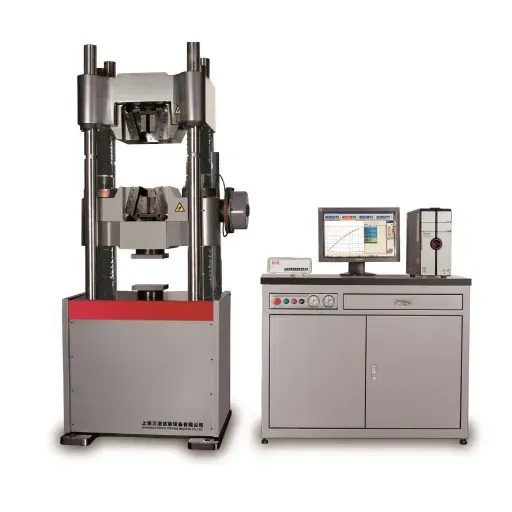
Choosing the Right Calibration Service Provider
When choosing a universal testing machine calibration service provider, it is advisable to check for competence and accreditation. Always ensure that the service provider is accredited by a recognized accreditation body complying with international standards such as ISO/IEC 17025. Accreditation assures that the calibration service provider carries out its processes with equipment that meets the necessary requirements for testing machine precision and reliability.
Experience on universal test machines is another key factor to consider. Providers highly conversant with material testing equipment are better placed to make complete and proper calibrations. They should provide solutions specific to the testing requirements you may have so that your test machine works per industrial requirements and standards.
Some important criteria to look out for include emergency services and customer-dependent support. Reliable calibration providers provide initial support and maintain timely support for all maintenance, troubleshooting, and periodic recalibrations. This timely support reduces downtime, further ensures accuracy in the long run, and supports the integrity of your testing processes.
Understanding ISO Standards for Calibration for Universal Testing Machines
Calibration according to these ISO standards ensures the proper performance and accuracy of UTMs. ISO standards were born out of the need to verify that testing machines were reliable and precise, ensuring uniformity amongst similar industries and testing laboratories. The most common and widely referenced one being ISO 7500-1, it sets forth the requirements for calibration and verification of force-measuring systems in tension and compression testing machines. Compliance with this standard ensures your UTM is capable of performing true measurements within internationally accepted measurement tolerances.
In accordance with ISO standards, UTMs are to be calibrated at regular times by accredited persons or organizations. During calibration, the load values indicated by the test machine are compared to those values of a reference load standard that has been calibrated and is traceable to the primary standard, and all the values must be within the prescribed limits. Periodic recalibration and documentation are required to keep compliance up-to-date as they provide a record to show how a particular machine performs over a specific period. The maintenance of certifications contributes to the operational integrity of testing machines and generates trust in the results by internal quality assurance and external audits.
ISO standards influence all materials testing processes to ensure that quality is upheld alongside validity. Proper calibration of UTMs ensures test results are accurate and repeatable concerning their strength, elongation, and other properties of a given material. This becomes highly relevant for industries such as construction, aerospace, and manufacturing, where materials undergo rigorous safety and quality criteria. ISO standards will help reduce possible errors within testing processes, thus reducing the risk posed by these processes, or accrediting experienced practitioners to ensure tests were undertaken correctly.
When to Seek Professional Calibration Services
Calibration by professional service providers should be sought for a UTM to provide accurate and reliable test results. Calibration should be carried out at scheduled intervals, particularly when the machine is intensively used or employed on critical applications. Many believe the best time to perform calibration on a UTM is annually; however, this schedule can change based on usage, working environment, or prevailing industry standards.
If one observes irregularities in test results or if one suspects some degree of wear-and-tear in the moving components of the machine, calibration should be sought from the professionals. Environmental factors affecting calibration include variations in temperature and humidity; therefore, their presence strongly points to recalibration. Scheduling recalibration activities will ensure the equipment complies with industry standards and remains in its established working order.
One will also have to undergo re-calibrations whenever operators replace or adjust critical components of the equipment such as load cells, extensometers, and grips. Such parts affect the exactness of the machine, and when such equipment is inadequately calibrated, results may not be deemed valid. Professional calibration guarantees that all safety and quality standards are met and extends the life of the UTM by potentially identifying issues before they worsen.
Maintaining Accuracy and Reliability in UTM Calibration
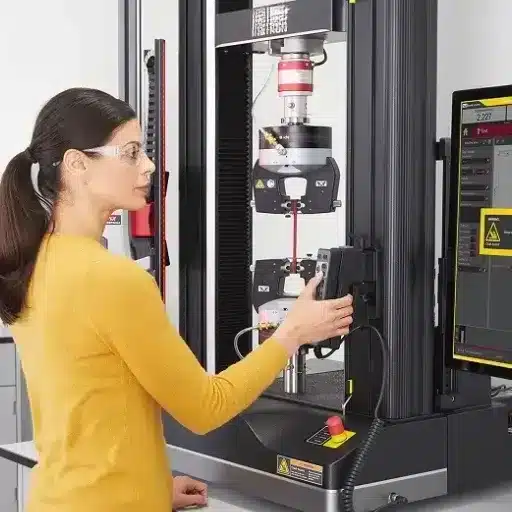
Best Practices for Routine Maintenance
Proper routine maintenance is important in making sure that a Universal Testing Machine (UTM) works accurately and remains reliable in the long run. Perform visible checks on a regular basis to look for wear, damages, or even loose parts; cables, grips, and load cells should be eyed with extra caution because of their importance to performance. The earlier corrective action is taken against identified abnormalities, the better, as large problems are averted and test results are maintained with precision.
The UTM should be kept free from dust, debris, and any environmental contaminants. For cleaning, use soft cloths that are lint-free. For smooth operation and along with that, to keep wear to a minimum, apply lubricant in accordance with manufacturers’ instructions on all moving parts. Do not use strong chemicals to clean the machine or else it will tarnish the machinery and start corroding after some time.
Lastly, ensure that calibration takes place at regular intervals, since calibration upholds the test results to be recognized by industry standards. A professional technician will also detect technical malfunctions that routine maintenance may miss. Together, regular cleaning and visual checks with periodic calibration ensure the overall maintenance of a UTM’s performance and reliability.
Troubleshooting Common Problems
So when solving common problems with the Universal Testing Machine (UTM), the first step is to seek any visible or operational anomalies. In many cases, this will be in the form of incorrect test results, the machine stopped working, or issues of supply power. To resolve an incorrect result, check to see if the machine is calibrated and inspect for wear and damage on critical parts, such as load cells or grips. An error in calibration will cause the measuring system to deviate from the real value, but usually, recalibration will restore it.
Another fairly common problem is when the machine will not start or it will start and almost immediately stop. Check if there is a power supply to the machine first, secure all the cables and connections, and ensure that the power connection is working perfectly. If already working, check out the fuse or circuit breaker for signs of being faulty and needing to be replaced. If the machine still does not work, check the control system or the software for faults and make sure it is up to date and properly configured. Fixing software glitches often involve reinstalling or resetting the program.
At another time, intermittent noises or unprogrammed mechanical moves may indicate that some wear is present or components are out of alignment. A good lubricant and regular inspection of moving parts reduce these incidents. If any strange noise persists, stop working with the machine immediately and seek assistance from a qualified technician to prevent further damage. Proper servicing and maintenance will help prolong the life and accuracy of a UTM.
Expert Tips for Effective Calibration
- Establish a Regular Calibration Schedule: In ensuring that a UTM is rendered accurate and reliable, calibration must necessarily be done on a routine basis. Fix a time schedule for the frequency of calibration as recommended by the manufacturer or practice it according to the frequency of use of the machine. Calibration at regular intervals ensures that a UTM weighs precisely in respect of force applications with less probability of errors occurring in the process of testing.
- Follow Standard Calibration Procedures: Always observe accepted standards, industry guides, or practices in calibrating your UTM. They provide clear directions for performing complete and effective calibration. Use certified equipment such as standard weights or calibrated extensometers so measurements taken can be certified accurate and are traceable either to national standards or to international standards.
- Keep Calibration Records: It is also very important that documented proof of calibration exist, and this documentation is used to verify the work done during quality auditing. The documentation must contain the calibration date, the parameters adjusted, the equipment, or tools used for calibration, and any calibration results found concerning specification limits. Use this documentation to review future calibrations evidence and to spot trends or abnormalities concerning machine behavior over time.
Frequently Asked Questions (FAQ)
Q: What is universal testing machine calibration?
A: The calibration of a universal testing machine is a process that ensures that the testing machine measures force, speed, and displacement accurately. This is based on recognized standards such as ASTM E4. It becomes necessary to calibrate testing machines to obtain reliable data on a product’s material properties.
Q: How important is accredited calibration for universal testing machines?
A: It is accredited calibration to ensure that the calibration process follows its own quality standards, which may be established by such organizations as NIST and ASTM International. This ensures that the measurement values obtained from the testing machine are credible and can be trusted in research and development application compliance.
Q: How much calibration must there be of a universal testing machine?
A: Therefore, consistent and frequent calibration is strongly affected by the universal testing machine. Many organizations keep to a general rule that calibration certificates usually expire after a year, although some machines undergo more frequent calibration according to their usage procedures.
Q: Which ASTM standards relate to the calibration of a universal testing machine?
A: ASTM standards specifying the calibration of UTM are ASTM E4, ASTM E2658, and ASTM E2309. These standards prescribe requirements for accuracy that include dynamic force measurement and extensometer calibration.
Q: What is the importance of calibration laboratories in universal testing machine calibration?
A: Calibration laboratories bear a critical importance in universal testing machine calibration as they provide precision calibration. They ensure that machines comply with national and international standards and provide accredited calibration certificates to vouch for the accuracy of the testing system.
Q: How does force calibration affect testing tensile machines?
A: Force calibration is vital in tensile testing machines as accuracy results depend on it. A proper calibration assures that forces applied during tensile tests are unambiguously measured and so prevent any uncertainty from being introduced into the test results and allows for a confident evaluation of the materials.
Q: Can the calibration of a universal testing machine be achieved through portable calibration systems?
A: Yes, a universal testing machine can be calibrated by portable calibration systems. These systems offer the possibility of conducting the cal-bration on-site, so that the testing machines retain their compliance with calibration standards with least downtime.
Q: How will I be sure that my materials testing is accurate?
A: In order for your materials testing to be accurate, it is vital that you constitute a trim calibration schedule, make use of accredited calibration services, and follow ASTM standards. This will assure good test results out of continuous upkeep and calibration of testing machines, thereby safeguarding the integrity of the testing processes.

